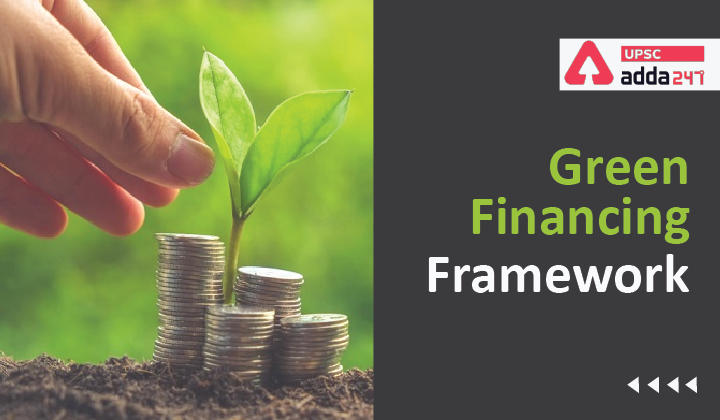Table of Contents
Green Financing Framework: Relevance
A green financing framework provides guidelines for organizations to structure their financial activities in support of environmental sustainability. It defines eligible projects and sets requirements for the use of financing proceeds. Green financing is increasingly important worldwide, helping businesses and governments align with climate change initiatives like the Paris Agreement.
In India, green financing is gaining relevance due to the country’s commitment to achieving net-zero emissions by 2070, its large population’s strain on natural resources, the need to reduce greenhouse gas emissions, and the growing demand for sustainable products and services. There are a number of challenges that need to be addressed in order to make green financing more mainstream in India. These challenges include:
- The lack of clear and consistent definitions of what constitutes a “green” project.
- The lack of a robust regulatory framework for green finance.
- The lack of awareness of green finance among businesses and investors.
Despite these challenges, there is growing momentum behind green financing in India. The government is supportive of green finance, and there is a growing number of businesses and investors that are interested in this area. As the green finance market matures in India, it is expected to play a significant role in the country’s transition to a more sustainable economy.
Green Financing Framework: Context
- Recently, the economic survey 2021-22 has proposed a mechanism to boost green financing in India, given that India is part of global sustainable finance initiatives.
Green Financing Framework: Key points
- The Survey has also emphasized regulatory initiatives of the finance ministry and of the Reserve Bank of India (RBI).
- Green finance is emerging as a public policy priority for the government and the central bank.
- Green financing implies financial arrangements that are specific to the use of environmentally sustainable projects.
- Green financing examples: clean energy projects, clean transportation that involves lower greenhouse gas emissions, energy-efficient projects like green building and waste management that includes recycling, efficient disposal, and conversion to energy.
- Economic Survey has emphasized that climate change-related financial risks pose both micro and macro-prudential concerns.
- New financial instruments such as green bonds, carbon market instruments, and new financial institutions are being established to meet the financial needs of these types of projects.
- For this reason, RBI set up a new unit called the ‘sustainable finance group’ within its Department of Regulation to effectively counter these risks and to lead the regulatory initiatives in the areas of sustainable finance and climate risk.
Sustainable finance group
- This group coordinates with and participates in issues relating to sustainable finance or climate risk with the international standard-setting bodies, other central banks, other financial sector regulators, and the government.
- The group would also suggest strategies and evolve a regulatory framework, including appropriate climate-related disclosures for banks and other regulated entities to propagate sustainable practices and mitigate climate-related risks in India.
What are green financing instruments?
Green financing instruments are financial products that are designed to support environmental sustainability. These instruments can take a variety of forms, including:
- Green bonds: These are bonds that are specifically designed to finance environmental projects. The proceeds of green bonds are typically used to fund projects such as renewable energy, energy efficiency, and sustainable transportation.
- Green loans: These are loans that are specifically designed to finance environmental projects. The proceeds of green loans are typically used to fund projects such as renewable energy, energy efficiency, and sustainable transportation.
- Green equity: This is equity that is specifically invested in environmental projects. Green equity can be used to fund projects such as renewable energy, energy efficiency, and sustainable transportation.
- Green credit: This is credit that is specifically provided to businesses that are engaged in environmental activities. Green credit can be used to finance projects such as renewable energy, energy efficiency, and sustainable transportation.
Green financing instruments are becoming increasingly important as businesses and governments around the world seek to reduce their environmental impact. By providing a clear and transparent way to finance sustainable projects, these instruments can help to channel capital towards activities that are aligned with the goals of the Paris Agreement and other climate change initiatives.
What is the difference between sustainable finance and green finance?
- Climate finance provides funds for addressing climate change adaptation and mitigation, green finance has a broader scope as it also covers other environmental goals, while sustainable finance extends its domain to environmental, social, and governance factors (ESG).



 TSPSC Group 1 Question Paper 2024, Downl...
TSPSC Group 1 Question Paper 2024, Downl...
 TSPSC Group 1 Answer key 2024 Out, Downl...
TSPSC Group 1 Answer key 2024 Out, Downl...
 UPSC Prelims 2024 Question Paper, Downlo...
UPSC Prelims 2024 Question Paper, Downlo...
